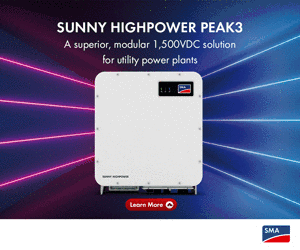Scientists in Australia have produced next-gen perovskite solar cells with a conversion efficiency of 17% which they say can transform windows into power generators. The semi-transparent solar cells are able to generate electricity while allowing light to pass through them.
The researchers – led by Jacek Jasieniak from the Australian Research Council’s Center of Excellence in Exciton Science, and by Melbourne’s Monash University – have published a paper in Nano Energy explaining how they used an organic semiconductor which can be made into a polymer to replace commonly-used solar cell component Spiro-OMeTAD. The latter material is characterized by very low stability and develops an unhelpful watery coating.
The switch, according to the researchers, produced astonishing results.
“Rooftop solar has a conversion efficiency of between 15 and 20%,” Jasieniak said. Referring to the devices created during the project, he added: “The semi-transparent cells have a conversion efficiency of 17% while still transmitting more than 10% of the incoming light, so they are right in the zone. It’s long been a dream to have windows that generate electricity and now that looks possible.”
The idea of semi-transparent solar cells is not new but previous designs have been hindered by cost, instability or inefficiency. For instance, the transparent solar technology of Australian Stock Exchange-listed company ClearVue offers a conversion efficiency of just 3.3%.
“There is a trade-off,” said Jasieniak. “The solar cells can be made more, or less transparent. The more transparent they are, the less electricity they generate so that becomes something for architects to consider.” He added, solar windows tinted to the same degree as current commercial fittings would generate around 140 watts of electricity per square meter. That means roughly 2m² of solar window would perform the same job as a standard rooftop solar panel.
Commercialization
Despite their limitations to date, solar windows have been touted as a game-changer which could transform architecture, urban planning and electricity generation. To reach the full potential of building-integrated PV, however, the technology would need a push from architects, builders and PV manufacturers.
Jasieniak and colleagues from Monash’s materials science and engineering department and Australian national science agency the Commonwealth Scientific and Industrial Research Organization (Csiro), are investigating how the technology could be built into commercial products with the help of Australia’s largest glass manufacturer, Viridian Glass. The project is being backed by the Australian Renewable Energy Agency.
The solar window paper’s co-author, and Csiro research scientist, Anthony Chesman, said the team was working on scaling up manufacturing. “We’ll be looking to develop a large scale glass manufacturing process that can be easily transferred to industry so manufacturers can readily uptake the technology,” he said.
The researchers say the first application is likely to be in multi-storey buildings. With conventional large windows for such buildings already expensive, the additional cost of incorporating semi-transparent solar cells would be marginal, according to the research group.
“Even with the extra spend, the building then gets its electricity free!” said Jasieniak. “These solar cells mean a big change to the way we think about buildings and the way they function. Planners and designers might have to even reconsider how they position buildings on sites, to optimize how the walls catch the sun.”
As to when the first commercial semi-transparent solar cells will be on the market: “That will depend on how successful scaling of the technology will be but we are aiming to get there within 10 years,” added Jasieniak.






